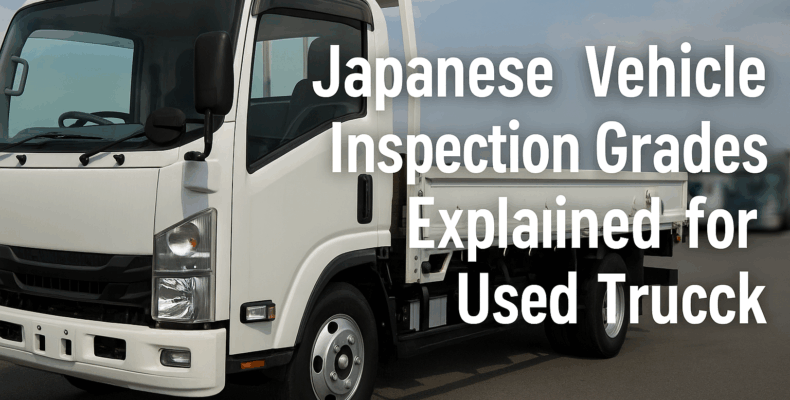When buying a Japanese used truck, one of the most important things to check is the inspection grade. This grade tells you about the truck’s condition before it leaves Japan. However, many global buyers don’t fully understand what each grade means—and that can lead to costly mistakes.
Thankfully, Japanese auction and inspection systems are among the most detailed in the world. They provide accurate and standardized ratings that help you choose trucks with confidence. Whether you’re buying a Hino Dutro, Isuzu ELF, or Fuso Canter, knowing the grade will help you decide if the truck meets your needs.
Let’s break down the meaning behind each grade and how to use it during your buying process.
🧾 What Are Japanese Inspection Grades?
Japanese inspection grades are numbers or letters assigned by professional inspectors at vehicle auctions or pre-export inspections. These grades evaluate:
-
Exterior and interior condition
-
Mileage
-
Accident or repair history
-
Mechanical performance (in some cases)
They make it easier for exporters and buyers to understand the truck’s true condition—even without seeing it in person.
✅ Main Vehicle Condition Grades (Exterior & Mechanical)
| Grade | Meaning |
|---|---|
| 6 or S | Brand-new or very close to new (usually <5,000 km) |
| 5 | Excellent condition, very low mileage |
| 4.5 | Near excellent, very few cosmetic flaws |
| 4 | Good condition with minor wear |
| 3.5 | Average condition, visible signs of use |
| 3 | Fair condition, some cosmetic and mechanical issues |
| 2 | Poor condition, major damage or rust |
| 1 | Severe damage or extremely poor condition |
| R / RA | Repaired vehicle (previous accident damage) |
| A / 0 | Major accident history (structural/frame damage) |
🪑 Interior Grades (Cabin Condition)
| Grade | Description |
|---|---|
| A | Excellent interior, no damage |
| B | Good interior, minor wear |
| C | Average interior, visible stains or cracks |
| D | Dirty, torn seats, major interior damage |
🔍 Mileage Indicators
Auction sheets also mark mileage with special notes:
-
実走行 = Verified mileage
-
不明 = Unknown mileage
-
改ざん = Tampered or suspicious mileage
-
多走行 = High mileage
Always look for “実走行” to ensure authenticity.
🚧 What Is a Grade R or RA Truck?
These trucks have been in accidents and have undergone repairs.
-
Grade R: Repaired accident vehicle, structure may be affected
-
Grade RA: Light accident with minor repair
-
Grade A or 0: Severe frame or chassis damage
Although these trucks are usually cheaper, they may pose risks if not properly restored. Always ask for before/after photos or inspection reports.
🛠️ How to Use These Grades When Choosing a Truck
Now that you understand the grades, here’s how to apply them:
1. Compare Grades to Price
A Grade 4 truck with clean history should cost more than a Grade 3.
If the price seems too low for a high-grade truck, ask why.
2. Check Interior and Exterior Separately
A truck might have a clean engine but a worn cabin.
Review both grades before making a decision.
3. Ask for Translations and Diagrams
Most auction sheets are in Japanese.
Ask your exporter to provide an English version, especially for inspector comments and damage diagrams.
4. Avoid Grade 1 or 0 Unless for Parts
These are often used only for parts or scrap resale.
If you’re buying to drive, stick with Grade 3 or higher.
🌍 Why Inspection Grades Matter to Global Buyers
In many countries, buyers can’t inspect the truck in person before purchase. Grades provide a level of trust and standardization.
They also help:
-
Compare similar models quickly
-
Meet import rules (some countries ban Grade R or A)
-
Estimate repair or upgrade costs
👉 Want help from trustworthy exporters?
Start here:
Top 5 Trusted Japanese Used Truck Exporters for Global Buyers
These professionals explain grades clearly and provide photo documentation.
✅ Final Thoughts
Japanese inspection grades give you a clear snapshot of a truck’s condition. From like-new Grade 5s to budget-friendly Grade 3s, each rating helps you make smarter decisions. By learning how to interpret these grades, you protect your investment and avoid surprises.
Use this guide on your next purchase—and choose your truck with full confidence.
